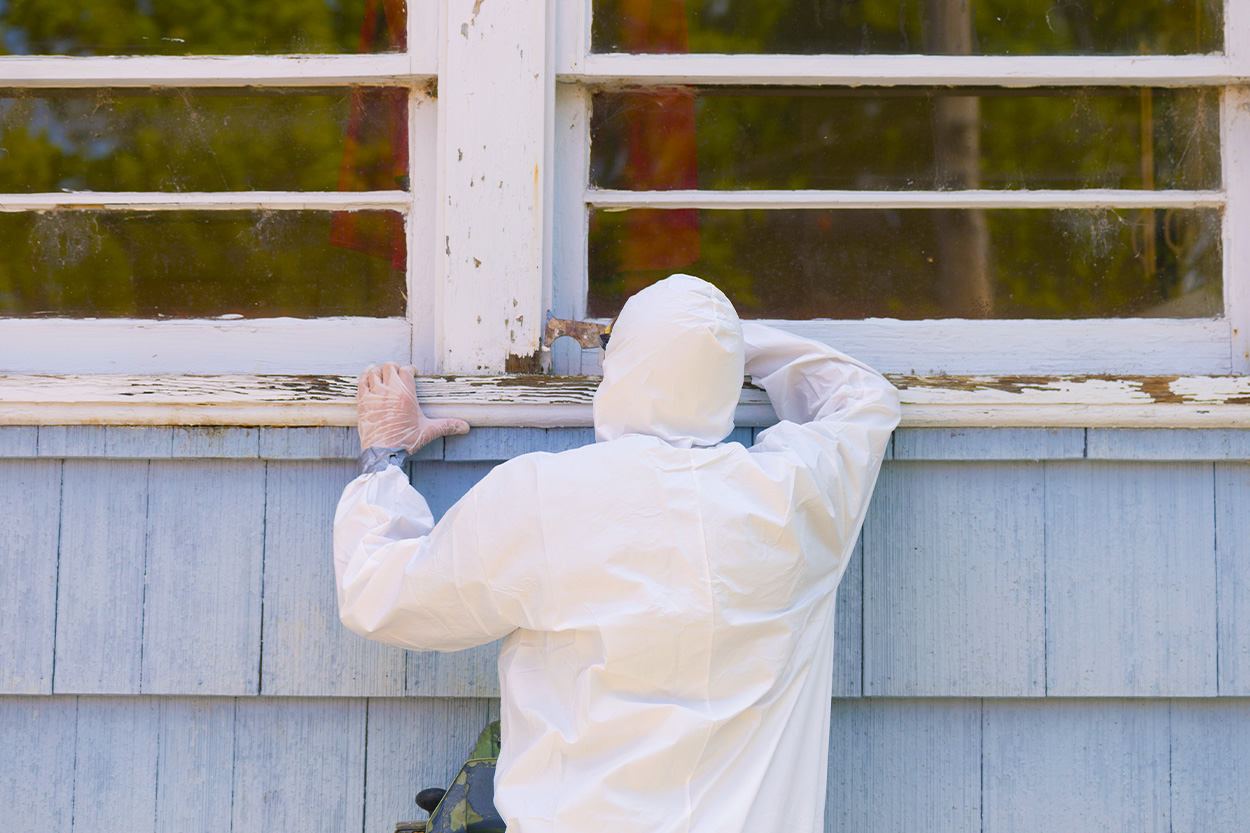Can You Sell a House with Lead Paint

Key takeaways:
- If your home was built before 1978, there’s a good chance that lead paint was used in your home.
- Lead paint is known to be hazardous if ingested or inhaled. Be wary of cracked or chipped paint, and paint over it if you don’t plan on removing it altogether.
- You can sell a house with lead paint if you take the necessary steps. Before selling or renting out your property, you must disclose any knowledge you have of lead paint in the house.
Can You Sell a House with Lead Paint?
Do you have a beautiful old colonial home you’re selling to a new family, or a ranch house that’s a bit of a fixer-upper for the next owner? Houses that are older have a lot of charm, but they come with their own set of concerns for prospective buyers.
If your house was built before 1978, one concern that should stay top of mind is that your house may contain lead paint. Lead paint was widely used in houses until the 70s, but its presence today can be off-putting to potential homebuyers—especially those with children.
If you have an older property you might be wondering, can you sell a house with lead paint?
Short answer: yes! While you should take it into consideration while selling, lead paint won’t necessarily make your property a pariah on the housing market. We’ll cover a few ways that will make it possible to sell even if lead is in the equation.
Why is Lead Paint Harmful?

The presence of lead paint can be worrying for both homeowners and homebuyers because of its dangers when ingested or inhaled. Lead poisoning is known to damage the brain and other vital organs.
You can get lead poisoning if you:
- Inhale lead dust.
- Ingest lead dust through food or off surfaces where dust may land.
- Eat lead paint chips or flakes.
Young children are particularly vulnerable to lead-based paint used on surfaces that get a lot of wear and tear, or that they can chew, such as:
- Stairs, railings, and fences
- Window sills and frames
- Doors and closets
They’re also more likely to come into contact with lead paint chips by putting their hands or other objects in their mouths, or through playing in contaminated soil.
Fortunately the chances of lead poisoning are not high if the paint is in good condition. Paint that is peeling, chipping or cracking can be hazardous, but it can also be easily remedied.
If you take the right precautions, you can figure out how to fix house with lead paint so that it’s ready for the market.
Your Responsibility When Selling a House
The first step to selling a pre-1978 house is disclosure, disclosure, disclosure.
You are required by federal law to inform prospective buyers of any information you have on lead-based paint. This can be done by submitting a lead paint disclosure form that asks if you are aware of any lead paint on the property. If you answer yes to the lead-based paint disclosure form, you will need to describe how you know, such as a lead test or prior acknowledgment from a seller.
It’s fine if you aren’t aware whether or not there’s lead-based paint, or only know as much as you were told by the previous owner. What’s essential is that you disclose what you know.
Can You Paint over Lead Paint?

A fresh coat of paint can do more than spruce up the house for your real estate agent to show around. It can be a simple, cost-effective way to take care of any lead paint hazards.
Since the risks of lead poisoning come when the paint is deteriorating, painting over it keeps the paint from flaking or chipping and releasing lead dust in the air. By repairing any damages to painted surfaces, you can minimize exposure to lead.
This is a very common solution used in many pre-1978 houses and a great way to freshen up the property for potential buyers.
Should You Test for Lead Paint Before Selling?
If you don’t know whether or not there’s lead-based paint in your house, should you get it tested before putting it up for sale?
It’s up to you. There are affordable DIY paint test kits available if you want cheap and quick results, but they might not be as reliable. The federal Environmental Protection Agency recommends using EPA-approved kits or hiring someone to do a professional inspection. These can be more expensive.
Note: The disclosure form doesn’t require you to test your house for lead paint, only that you release what information you know. You can give prospective buyers a 10-day window to do their own paint inspection. They also have the option to waive an inspection, so testing is entirely optional when selling your house.
Should You Try to Remove Lead Paint?
If it’s not necessary, it’s not recommended that you try to remove lead paint before selling. Removal can be an expensive process that presents serious health hazards.
You can reduce lead hazards temporarily by taking the following actions:
- Repairing damaged surfaces
- Painting over deteriorating lead paint
- Planting grass over lead-contaminated soil
- Carefully cleaning up lead chips and dust on a weekly basis
These steps require ongoing maintenance by the eventual homeowner. Permanent removal methods, or abatement, include:
- Removing
- Sealing
- Enclosing
Abatement methods use techniques and materials specially designed to handle lead-based paints. It’s highly recommended that you hire an EPA or state-approved contractor who is trained in lead safety to conduct this work.
Any DIY attempts to remove lead should be accompanied by lead-safe work practice training. Repair and renovation attempts can disturb toxic lead dust that’s already settled and spread it around the house. Take the necessary precautions to protect yourself from breathing in any disturbed dust during the removal process, such as:
- Wearing protective gear (goggles, gloves, lead-paint filter masks)
- Use a HEPA vacuum (High Efficiency Particulate Air) to clean up paint chips and dust
The lead paint removal process is costly and messy, which is why many sellers choose to paint over it instead.
Don’t Let Lead Paint Get In Your Way
Since lead-based paint was so pervasive, people have found ways to contain and eliminate risk in older homes. When in doubt, a fresh coat of paint can reduce lead hazards and make your house more attractive on the market.
Alerting potential buyers to any information you have on lead paint is required and can protect both of you in the long run. Lead paint can be a scary specter to homeowners and buyers, but it doesn’t have to make the process of selling your house harder.
Sources:
Department of Housing and Urban Development. About Lead-Based Paint. https://www.hud.gov/program_offices/healthy_homes/healthyhomes/lead
United States Environmental Protection Agency. Protect Your Family from Sources of Lead.
https://www.epa.gov/lead/protect-your-family-sources-lead#main-content
United States Environmental Protection Agency. Protect Your Family from Lead in Your Home (March 2021). https://www.epa.gov/sites/production/files/2020-04/documents/lead-in-your-home-portrait-color-2020-508.pdf
United States Environmental Protection Agency. Lead-Based Paint Abatement and Evaluation Program: Overview. https://www.epa.gov/lead/lead-based-paint-abatement-and-evaluation-program-overview






